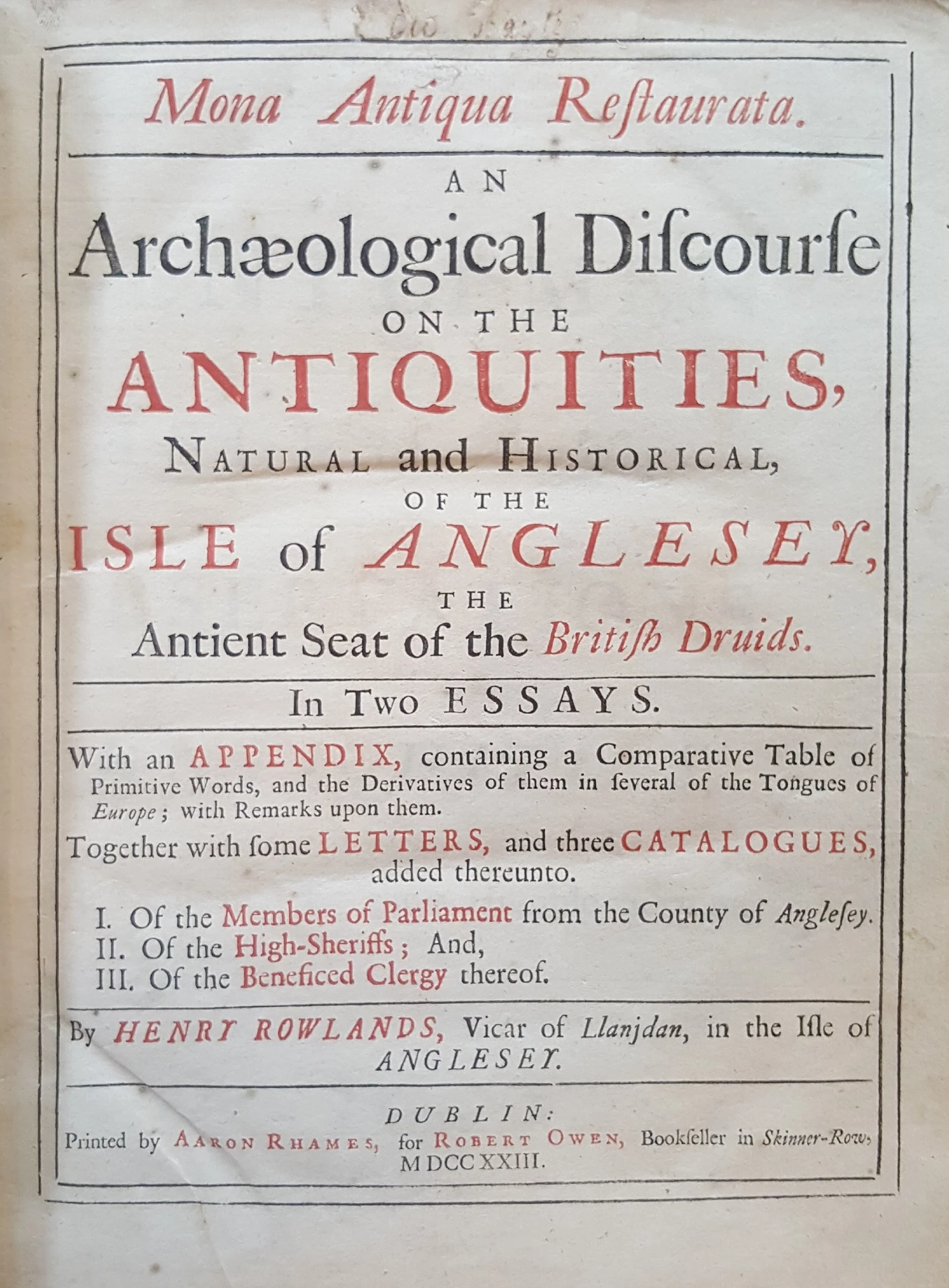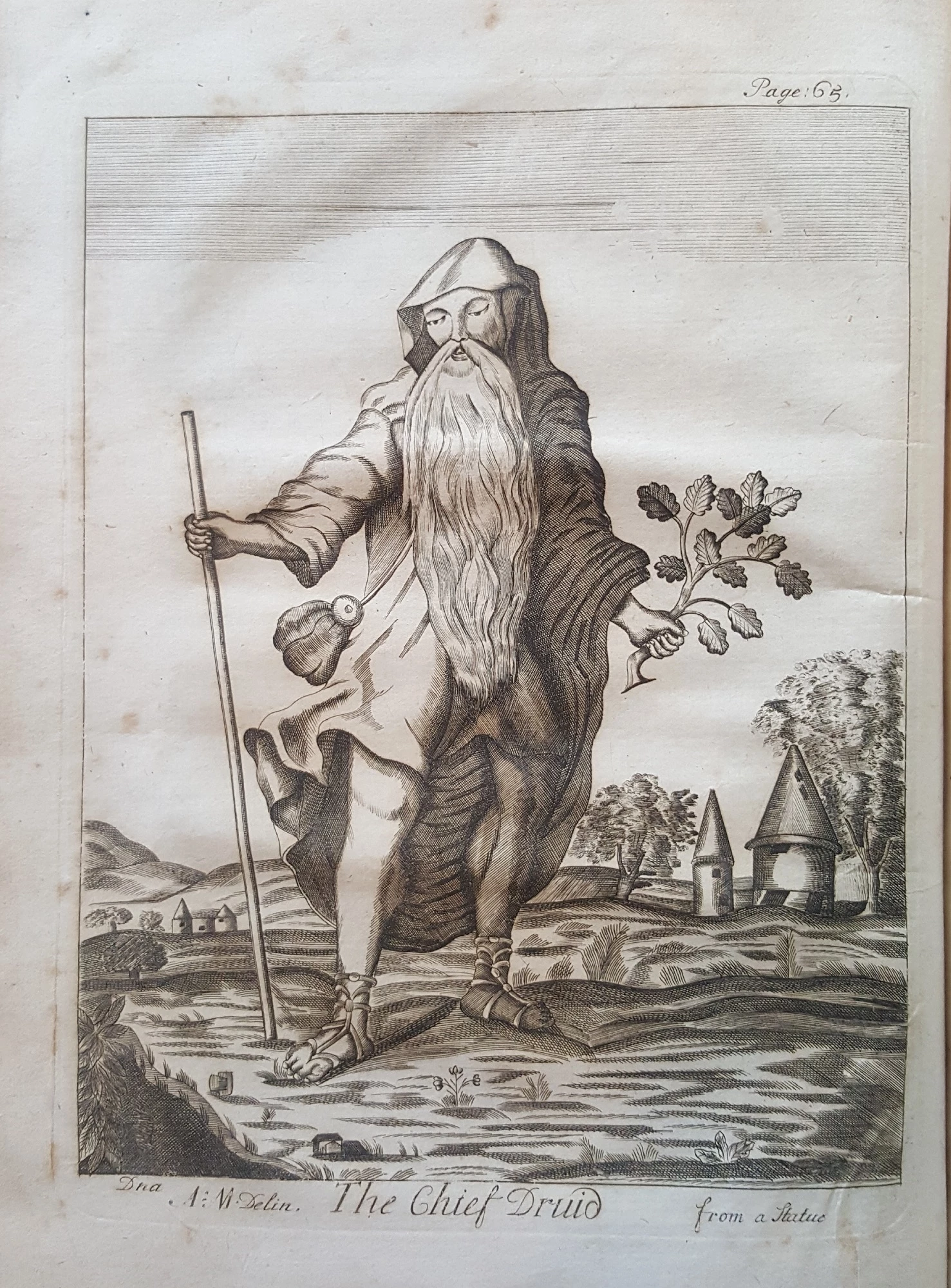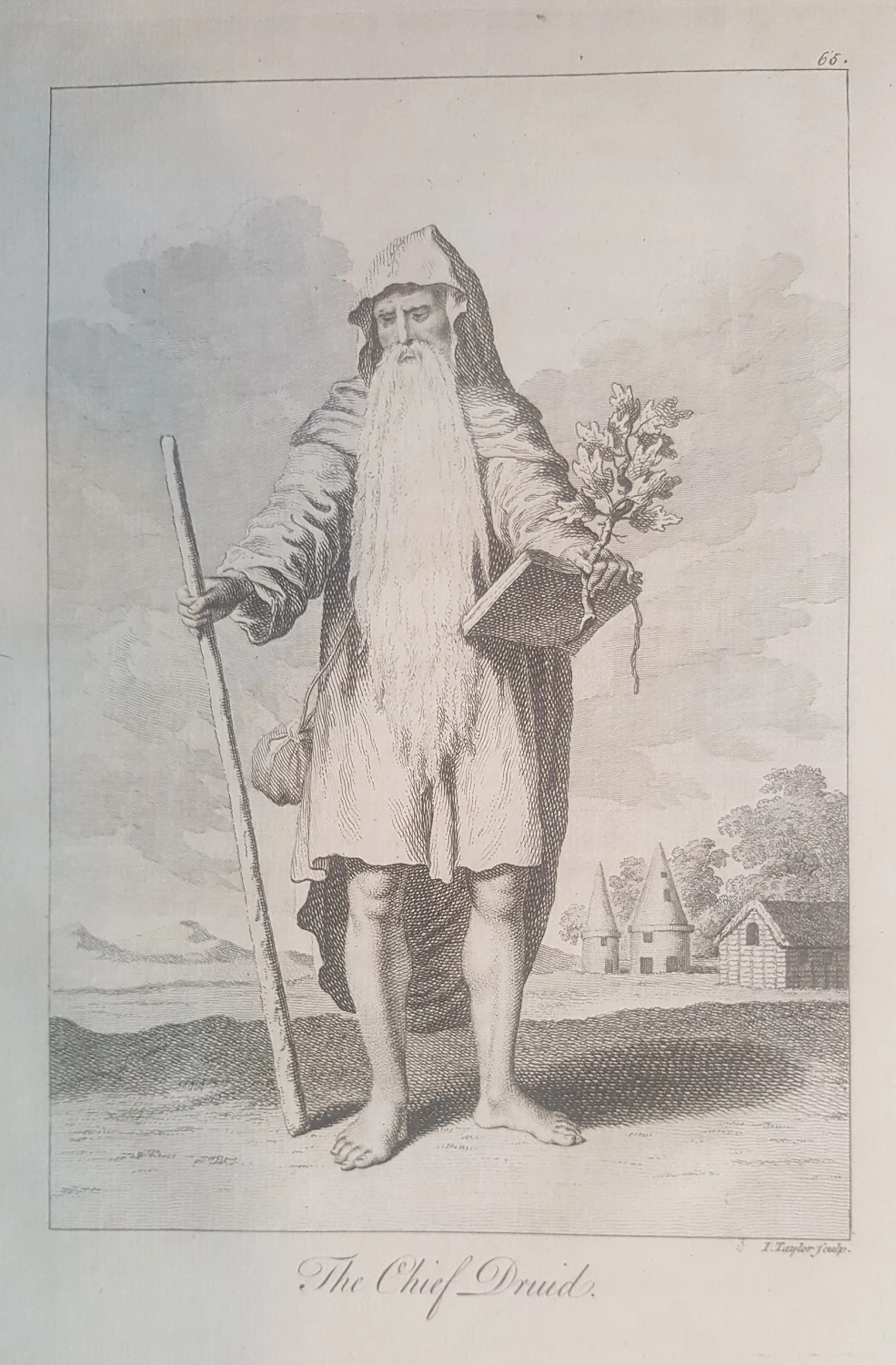Mona Antiqua Restaurata by Henry Rowlands
, 4 August 2017
Last week I wrote about some of the rare books in the Museum Library for the Day of Archaeology blog. One of those books was Mona Antiqua Restaurata: an Archaeological Discourse on the Antiquities, Natural and Historical, of the Isle of Anglesey, the Antient Seat of the British Druids.
Because the Eisteddfod begins in Anglesey this weekend, it seems fitting to take a closer look at the book. The author of Mona Antiqua Restaurata was the Reverend Henry Rowlands (1655–1723) of Llanidan on Anglesey. Rowlands never travelled far from home, but instead spent his time investigating the stone circles, cromlechs, and other prehistoric remains on Anglesey, leading him to conclude that Anglesey (or Mona) was the ancient centre of Druidic worship.
His work opens with a geographical account of the island, before giving an account of the history of the place, and its people. His findings were much stronger in terms of his field observations, than in his conclusions, many of which now, we know to be factual incorrect. However, his book did much to popularise interest in Druid culture, and may travellers followed in his footsteps to explore the artefacts of Anglesey for themselves, and his accurate drawings of the various ancient monuments still hold merit.
We have three copies of Mona Antiqua Restaurata in the Library at National Museum Cardiff. Two of the copies are versions of the first edition, published posthumously in Dublin in 1723, while the third copy is of the second, revised edition, issued in London in 1766. That version was edited by Dr Henry Owen (1716 - 1795).
Dr Owen, originally from Dolgellau and a member of the Honourable Society of Cymmrodorion, had a special interest in Welsh antiquities, and made a number of revisions to the book, one of which was the slight changes in appearance of the Druid. He removed the sandals, making the Druid barefoot, and he also added a book to the hand that was holding the oak leaves.
A similar illustration was produced in Stonehenge, a temple restor’d to the British Druids by William Stukeley (1687 - 1765), which was first published in 1740, just 17 years later than Mona Antiqua Restaurata. Although the Library doesn’t hold a copy of the first edition, we do have a copy that was produced in 1838, which depicts his Druid in a very similar manner, although instead of holding oak leaves, he is standing under an oak tree, and he has the addition of a small axe at his belt.
Perhaps both authors based their images on an even earlier depiction, that of Aylett Sammes (c.1636 - 1679), whose Britannia Antiqua illustrata: or, the antiquities of ancient Britain was published in 1676. From the copy we hold in the Library, we can see that his Druid has the flowing beard and hooded robes of both Rowlands and Stukeley’s versions, and his stance and the way he is holding his staff are also similar. However, there doesn’t seem to be any references to the significance of oaks in the illustration by Sammes.






Comments - (1)
best to hide than Christies Croft, where they ask Christies Croft be, it's between the Ribble and Mersey." I always thought that the poem was talking about the Norman Conquest but now I believe it's from the Roman conquest?
How do I know my artefacts are Celtic and not Norse. My assistant visited Anglesey a few weeks back and brought back a carved stone exactly the same as I have. I visited the site the next day found flattened mounds and more artefacts and that was in a few hours. I have sat down with the landowner and showed him what I had found and what I thought was going on on his land. He was very impressed and permission for any digs or anything else needed to be done is not a problem. Got it in writing too. What I have should be in a Museum in Wales and not at my home. A number of mounds in the area are looked at by local Archies but they don't know what they're looking for. I have been to see all the people who have mounds on there land to explain the mounds properly show them artefacts from there mounds and tell to take no notice what so ever of the Museum people and not to discard anything at all. Thankfully they have taken notice and I now keep in regular contact with all of them. I am in Anglesey again next week. The site needs detailed analysis It is very important I am sure you agree. I will be bringing artefacts from Maghull so it will be plain to see the same people made them. Many thanks for taking the time to read my letter and please if you can guide me in the right direction it would be so helpful. I am panicking that if I pop off (60yrs now) this will be lost. What I have said in this letter is but a tiny percentage of what I have.
Thanks again
Chris Pope